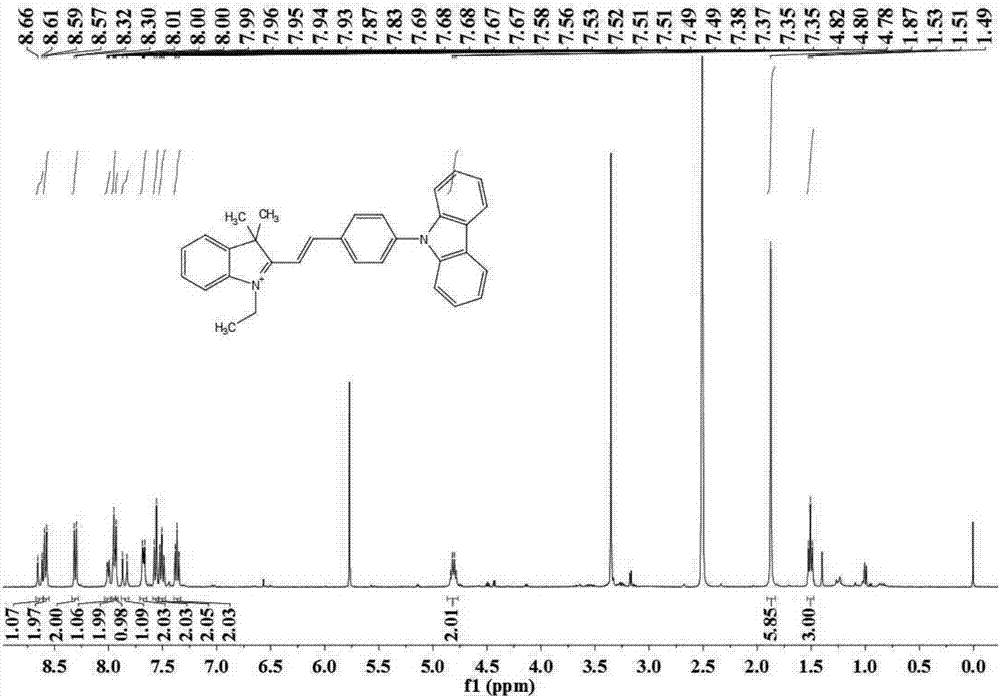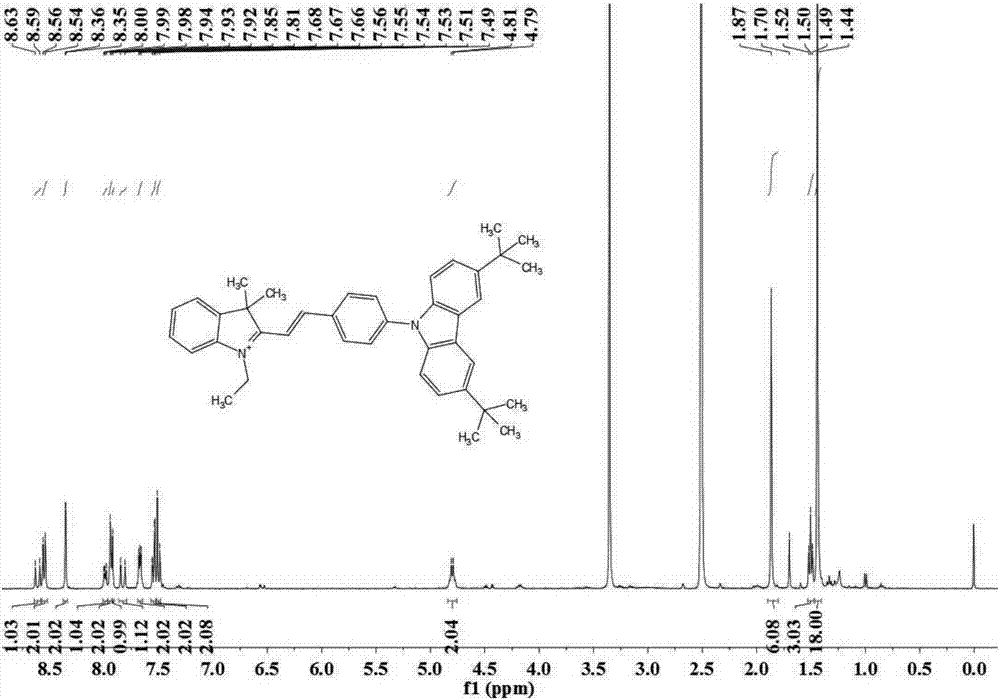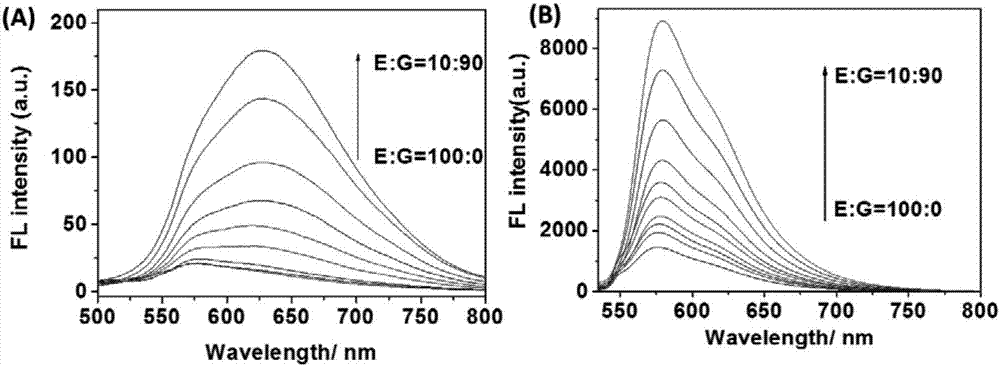Mitochondrion-targeted viscosity determination fluorescent probe as well as preparation method and application thereof
A fluorescent probe and mitochondrial technology, applied in the direction of fluorescence/phosphorescence, chemical instruments and methods, luminescent materials, etc., can solve the problem of not many fluorescent probes, achieve good targeting, high sensitivity, and broad application prospects Effect
- Summary
- Abstract
- Description
- Claims
- Application Information
AI Technical Summary
Problems solved by technology
Method used
Image
Examples
Embodiment 1
[0037] Example 1 Synthesis of fluorescent probe CIV1.
[0038] The synthetic route of fluorescent probe CIV1 is as follows:
[0039]
[0040] The synthesis steps of fluorescent probe CIV1 are as follows:
[0041] (1) Dissolve 2,3,3,-trimethylindole (2.0g, 12.6mmol, 1.0eq) and bromoethane (2.1g, 18.9mmol, 1.5eq) in 2mL of acetonitrile, heat to reflux at 85°C Reaction 15h. The reaction solution was spin-dried, filtered under reduced pressure, and washed with ether to obtain compound 1.
[0042] (2) Carbazole (1.0g, 6mmol, 6.0eq), 4-bromobenzaldehyde (2.2g, 12mmol, 12.0eq), copper powder (64mg, 1mmol, 1.0eq), K 2 CO 3 (1.24g, 9mmol, 9.0eq) was dissolved in 10mL of nitrobenzene, under nitrogen protection, and heated at reflux at 180°C for 24h. Use a TCL plate to detect the reaction. After the reaction is complete, cool to room temperature and separate with a silica gel column. The silica gel particle size is 200-300 mesh, and the eluent ratio is ethyl acetate / petroleum eth...
Embodiment 2
[0044] Example 2 Synthesis of fluorescent probe CIV2.
[0045] The synthetic route of fluorescent probe CIV2 is as follows:
[0046]
[0047] The synthesis steps of fluorescent probe CIV2 are as follows:
[0048] (1) The synthesis of compound 1 is the same as in Example 1.
[0049] (2) carbazole (1.0g, 6mmol, 1.0eq) and ZnCl 2 (2.45g, 18mmol, 3.0eq) was dissolved in 20mL of nitromethane, under nitrogen protection, after stirring for several minutes at room temperature, chlorobutane (1.7g, 18mmol, 3.0eq) was injected into the above reaction system with a syringe, and Reaction 5h. The reaction was detected on a TCL plate. After the reaction was complete, it was quenched with water, extracted twice with dichloromethane, washed with saturated saline for 2-3 times, and dried over anhydrous sodium sulfate. The solvent was spin-dried under reduced pressure to obtain a crude product, which was separated with a silica gel column. The silica gel particle size was 200-300 mesh, and ...
Embodiment 3
[0054] Example 3 Visual detection of viscosity by fluorescent probes CIV1 and CIV2.
[0055] 40 μL of each fluorescent probe CIV1 stock solution obtained in Example 1 was taken out and added to two 5 mL sample tubes, one was added with 3 mL of ethanol, and the other was added with 3 mL of 90% glycerol solution. The same operation was performed for the fluorescent probe CIV2. It was observed that the solution had a significant color change: the solution color of CIV1 changed from colorless to light orange ( Figure 5 A), with the viscous fluorescent probe visible to the naked eye under ultraviolet light emitting red fluorescence ( Image 6 A); The solution color of CIV2 changed from almost colorless to red ( Figure 5 B), accompanied by the viscous fluorescent probe visible to the naked eye under ultraviolet light emitting red fluorescence ( Image 6 B). It shows that CIV1 and CIV2 are fluorescent probes with chromogenic sensing function, which can be used to qualitatively ...
PUM
 Login to view more
Login to view more Abstract
Description
Claims
Application Information
 Login to view more
Login to view more - R&D Engineer
- R&D Manager
- IP Professional
- Industry Leading Data Capabilities
- Powerful AI technology
- Patent DNA Extraction
Browse by: Latest US Patents, China's latest patents, Technical Efficacy Thesaurus, Application Domain, Technology Topic.
© 2024 PatSnap. All rights reserved.Legal|Privacy policy|Modern Slavery Act Transparency Statement|Sitemap



